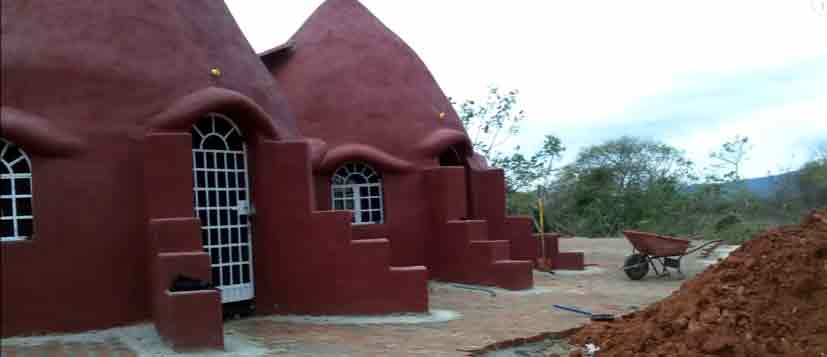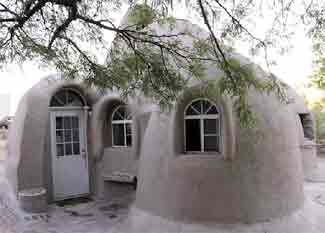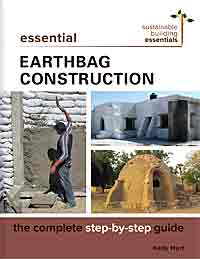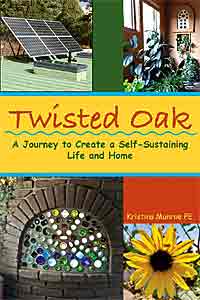Earthbag, Underground, and Earthships as Tiny Homes
Earthbag, Underground, and Earthships, using locally-sourced materials, can reduce your carbon footprint. Building an Earthbag, Underground, or Earthship home is neither easy or inexpensive. I see that people build these “alternative” buildings for fun, or because they love a challenge. Many folks are determined to save the planet by constructing their home out of natural material like dirt or straw. They also like the possibility of using less energy, being closer to nature, etc.
See the unique Aircrete home down below.
See Hempcrete building materials at the bottom of this page.
This is getting pretty far removed from our original goal of inexpensive housing alternatives. You are not going to be tacking one of these homes together in the driveway or backyard. These homes need to be professionally engineered to be safe, and provide the level of quality required to make them livable.
An Underground Home Example
Here is a YouTube® video of an underground tiny home built by Kristie Wolf. She has built several tiny homes off-grid, with very little help, just for the fun of it. This one is the beginning of a “Hobbit Village” she is hoping to complete. Stay in this unique tiny home thru Airbnb.
The home has a sturdy wooden frame. However, you do see part of the utility room wall cracking under the weight of the surrounding dirt.
Real underground homes are costly. They need to be professionally engineered and built. This YouTube® video shows a really nice underground home. In the photo, the owner of an underground home near me had to abandon the build after the costs soared to around a million dollars.

Earthbag Construction
Earthbag construction is an interesting building method, generally built with hand tools and a lot of backbreaking hard work. These could not be considered an answer to your housing issue. It’s more a labor of love in an artsy way to see what you can do. Here is a source of knowledge and equipment needed.
Containing over 75 photos and illustrations, Essential Earthbag Construction is a practical guide to this affordable method of building. Going well beyond the scope of other sources, this indispensable manual is packed with all the information you need to determine if it’s the right choice for your project, and to start building.
Here’s where you can get the earthbags 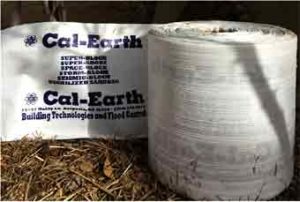
A good website for more information on building earth-bag homes is California Institute of Earth Architecture.
Red Earthen Home shown at the top of this page
Here is an excellent YouTube® video detailing the construction of the red earthen home at the top of this page:
Earthships
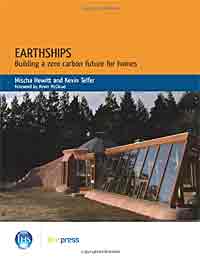
Earthships are fascinating. This type of home uses a variety of passive solar and other zero carbon-producing energy methods. They are built of upcycled materials like old earth-packed tires. The owners are dedicated to using no public utilities and producing no waste. It is a labor of love to keep all the infrastructure systems running.
“Architecture is undergoing rapid change as the issues of climate change and cutting carbon emissions in buildings become more and more widely understood. The Earthship is a building concept that has evolved over the last 30 years, and represents a pioneering form of zero-carbon residential building that tackles a variety of sustainability issues. This book charts the building of the first Earthships in the UK and their relevance to home building and architecture generally. It offers lessons about sustainable architecture and about the legislative and regulatory culture that affects their construction, by looking at energy, water, building with waste, and construction methods, and assessing the future of these buildings.
Builders of Earthships are dedicated to sustainable building methods
As with these other building methods on this page, we simply mention Earthships because they are an alternative building method.
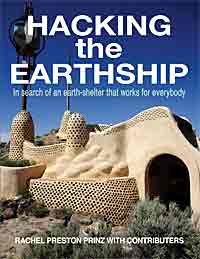
Here is another good book on Earthships: Hacking the Earthship: In Search of an Earth-Shelter that Works for Everybody is a collection of academic and in-the-field research on Earthships, combined with practical advice for designing and financing a truly sustainable earth-sheltered home.
Rachel Preston Prinz and contributing authors discuss the history, research, design issues, and evolution of Earthships, drawing on the knowledge of thousands of builders, craftsmen, and designers who have mastered the art of earth sheltering. Then, they walk readers step-by step through design, offering a wealth of resources that can inspire, inform, and educate. Within, readers will find the tools needed to understand their place’s culture, architecture, and climate… and the ideal building methods for their climate, personality, values, and budget.
Here is a great YouTube® video about an earthship you might like.
Twisted Oak: A Journey to Create a Self-Sustaining Life and Home
Twisted Oak is the inspiring, true story of a family seeking a more sustainable life in a complex, technology-driven world. Their journey leads them to build a self-sustaining home and lifestyle in the sunny mountains of southwestern Colorado, as they pursue their goals: to maintain a balance of respecting the natural world, and continuing to remain engaged in the modern world.
Along with the heartwarming story, Twisted Oak is full of technical inserts and plenty of practical tips from an engineer who not only designed her home but helped build it, and has comfortably lived in it with her family for over six years.
Kristina Munroe grew up in Durango, Colorado. She holds a professional engineering license (PE) in both Washington State and Colorado.
Kristina has a series of great YouTube® videos, the book Twisted Oak, shown on the right, and also online courses to help you design your sustainable home. This online course sells for $97.00 but through this link you can access it for free.
This now FREE course covers these topics in 13 videos:
- Finding Property That Fits Your Goals
- Getting to Know Your Site
- Working with Your Land
- Passive Solar Basics
- Thermal Mass and Insulation
- Laying Out a Home that Works With Nature
- The Basics You Need to Know About Solar Power
- What is Grey water and How You Can Use It
- How to Catch Water on Your Roof
- How to Turn Your Waste into a Resource
The Munroe’s newest endeavor is a website called Clarity Off Grid. They will be converting a camper van in their own unique style and hitting the road. There is also a section of the website for their off grid resources.
AirCrete Dome Home
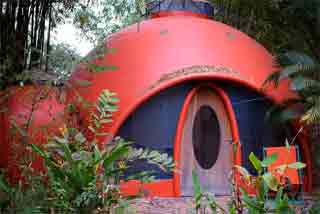
Aircrete is concrete that has been infused with a foaming agent. It is an awesome building material; I mention it here because the homes are similar to earthen and earthbag homes in their final appearance. Domegaia is the website of a guy who is pioneering aircrete construction. He sells some unique tools for mixing and applying aircrete. Here is the YouTube® video about it.
Building Codes for Earthbag, Underground, and Earthships
There are no building codes specifically written for these “non-standard” construction methods like Earthbag, Underground, or Earthships. But you do still need to meet your local building code standards. Here is a good website article about that: Home In The Earth
Discuss your building plans with your local zoning and building inspectors before putting to much time and effort into it.
Hempcrete approved as a building material in U.S.
From Hempbuild Magazine Oct. 2022: “Hemp building materials were officially approved in the model US residential building code at a Louisville, KY public hearing overseen by the International Code Council (ICC) last week.
At the meeting, the ICC closed the public comment period for hemp+lime (hempcrete) construction for inclusion as an appendix in the upcoming 2024 International Residential Code (IRC). This was the final step to approve the appendix as part of the new code. The new code will be published in 2023 with Hemp-Lime (Hempcrete) appearing as “Appendix BA.” The IRC is the basis for the residential code in 49 of 50 U.S. states (Wisconsin being the outlier). It applies to one- and two-family dwellings and townhouses.”


